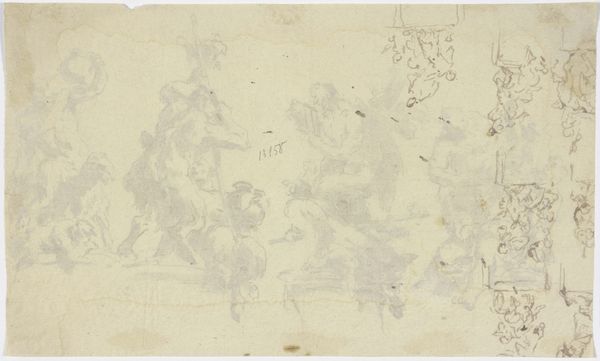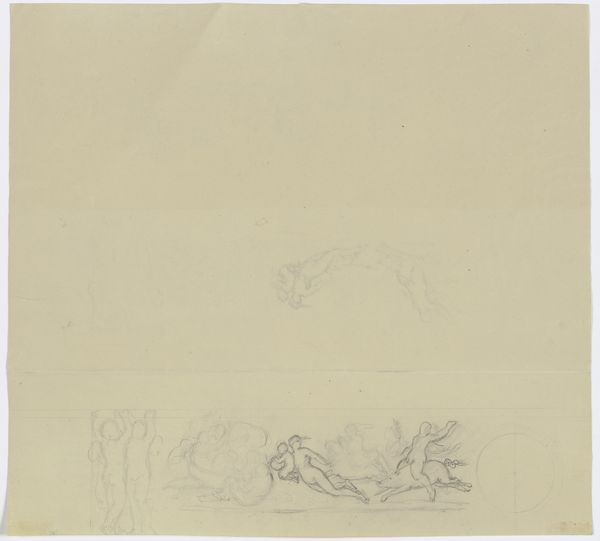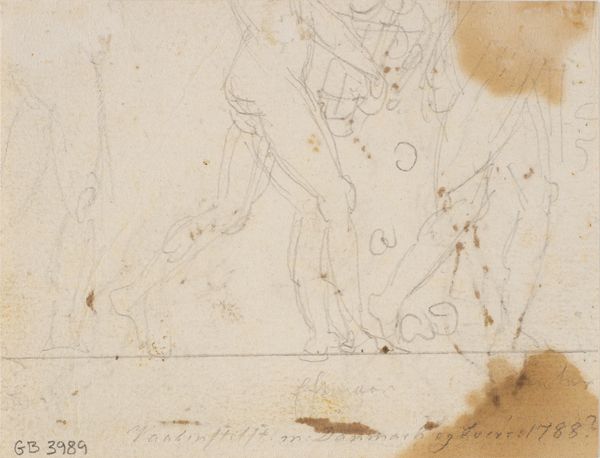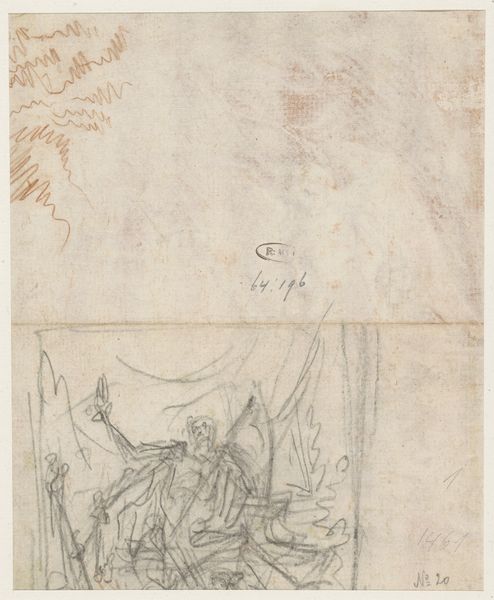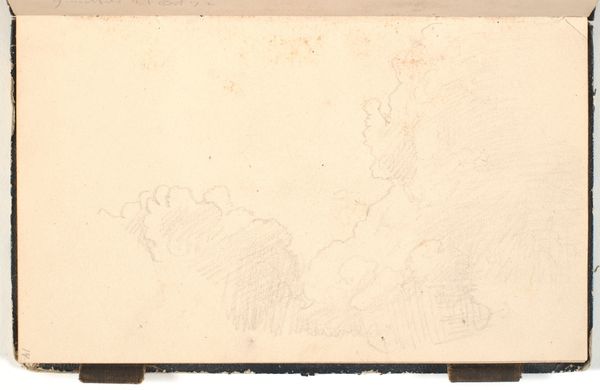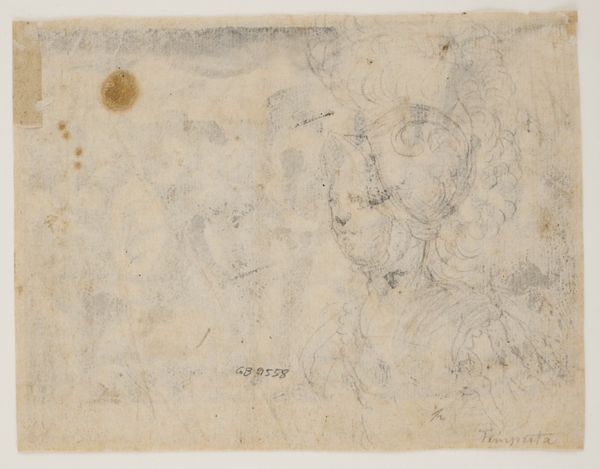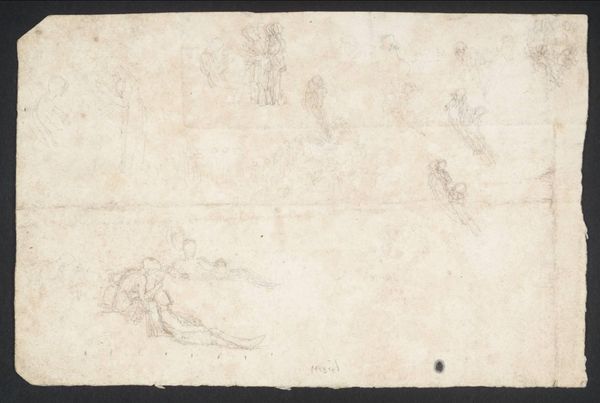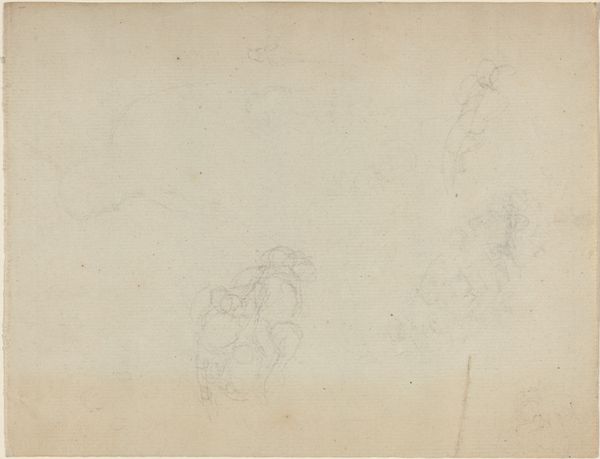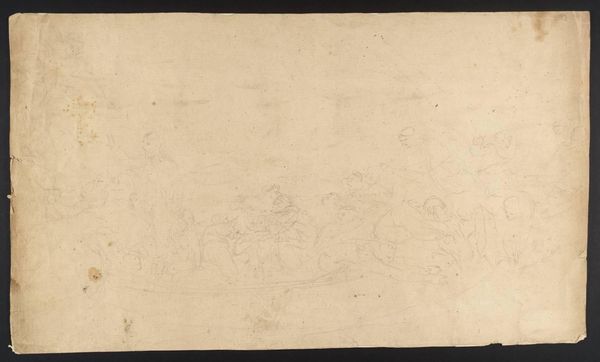
drawing, paper, pencil
#
drawing
#
baroque
#
paper
#
form
#
pencil
#
line
Dimensions: 113 mm (height) x 175 mm (width) (bladmaal)
Curator: Looking at this pencil drawing from the first half of the 18th century, dating from between 1720 and 1751, one cannot but appreciate how Marcus Tuscher, here at the Statens Museum for Kunst, has rendered a compelling vision of ornamentation, appropriately entitled Dekorationsudkast. Editor: There’s something ethereal about the delicate pencil strokes. It feels fleeting, like catching a glimpse of a dream before it vanishes. I’m immediately drawn to the swirling forms; they speak of hidden meanings, though obscured by the translucence of the drawing and time itself. Curator: Exactly, and if you examine the historical context, you see the rise of these drafts during an explosion of public display and Baroque theatricality. Ornamentation, such as rendered by the hand of an artist such as Tuscher, played a key role in shaping Baroque aesthetics, mirroring and affecting politics and religious sentiment. Editor: The swirling forms you describe appear almost aquatic. Is it possible they depict something more than mere ornamentation? I am seeing sea monsters here, twisted foliage there… they almost feel like cultural artifacts resurfaced, a testament to ancient mythologies repurposed to create the aesthetic of Baroque art. The ornamentation becomes a signifier. Curator: Very possibly so. The Baroque appropriated everything, but perhaps the line and draft aspect renders them here as instruments of public governance, cultural persuasion. Remember that this artwork represents the museum—a place where power converges through artifacts. Editor: Perhaps you are right and such drawings demonstrate cultural power through control of representation. What I am struck by, nonetheless, is that they do indeed create cultural meaning by reinterpreting ancient mythologies through symbolism. Curator: This brings a depth to our appreciation, acknowledging art’s societal functions and its enduring iconography. Editor: Precisely—both the drawing and ornamentation create a depth through layering both conscious, civic representation with unconscious symbols.
Comments
No comments
Be the first to comment and join the conversation on the ultimate creative platform.


